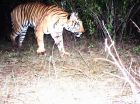(Press-News.org) Washington, DC--The Endocrine Society today issued a Clinical Practice Guideline (CPG) for the diagnosis and treatment of Paget's disease of the bone, a condition where one or more bones in the body become oversized and weak.
The CPG, entitled "Paget's Disease of Bone: An Endocrine Society Clinical Practice Guideline," will appear in the December 2014 issue of the Journal of Clinical Endocrinology and Metabolism (JCEM), a publication of the Endocrine Society.
As part of its normal processes, the body breaks down old bone tissue and replaces it with new bone. When someone has Paget's disease of the bone, the new tissue being formed can grow too large and weak.
About one million people nationwide have Paget's disease of the bone, according to the National Institutes of Health's National Institute of Arthritis and Musculoskeletal and Skin Diseases. Among people who are older than 55 years, an estimated 2 to 3 percent have Paget's disease. The condition is rare in people who are younger than age 40.
"We've long known that bisphosphonates - a class of drugs often used to treat osteoporosis and other bone conditions - work well for treating Paget's disease," said Frederick R. Singer, MD, of the John Wayne Cancer Institute in Santa Monica, CA, and chair of the task force that authored the guideline. "One particular option - a one-time IV infusion of zoldedronate - has emerged as the preferred option. The medication can put Paget's disease into remission for up to six years, and many patients prefer the one-time infusion to oral medications that can cause gastrointestinal side effects and must be taken over the course of several months."
In the CPG, the Endocrine Society recommends that people with active Paget's disease at risk of future complications be prescribed bisphosphonates. The Society suggests physicians consider the zoldedronate infusion as the first-line treatment unless there is a reason to avoid the treatment, such as reduced kidney function in the patient.
Recommendations from the CPG include:
As part of the diagnostic process, plain radiographs should be taken of suspicious areas of the skeleton.
Following a diagnosis, measurements of the patient's serum total alkaline phosphatase (ALP) levels, or a more specific bone marker when appropriate, should be performed to determine the extent of the damage.
People who have both Paget's disease and abnormal liver function - either in the organ itself or the biliary tract - should undergo a measurement of a specific bone marker to assess response to treatment or, in an untreated patient, determine the disease's course.
Since many patients do not report feeling pain when the disease activity recurs, patients should undergo testing for bone markers to determine if they are relapsing.
INFORMATION:
Other members of the Endocrine Society task force that developed this CPG include: Henry G. Bone III of the Michigan Bone & Mineral Clinic in Detroit, MI; David J. Hosking of Nottingham City Hospital in Nottingham, U.K.; Kenneth W. Lyles of Duke University and VA Medical Centers in Durham, NC; Mohammad Hassan Murad of the Mayo Clinic in Rochester, MN; Ian R. Reid of the University of Auckland in Auckland, New Zealand; and Ethel S. Siris of Columbia University College of Physicians & Surgeons in New York, NY.
The Society established the CPG Program to provide endocrinologists and other clinicians with evidence-based recommendations in the diagnosis and treatment of endocrine-related conditions. Each CPG is created by a task force of topic-related experts in the field. Task forces rely on scientific reviews of the literature in the development of CPG recommendations. The Endocrine Society does not solicit or accept corporate support for its CPGs. All CPGs are supported entirely by Society funds.
The CPG was co-sponsored by the European Society of Endocrinology.
Founded in 1916, the Endocrine Society is the world's oldest, largest and most active organization devoted to research on hormones and the clinical practice of endocrinology. Today, the Endocrine Society's membership consists of over 17,000 scientists, physicians, educators, nurses and students in more than 100 countries. Society members represent all basic, applied and clinical interests in endocrinology. The Endocrine Society is based in Washington, DC. To learn more about the Society and the field of endocrinology, visit our site at http://www.endocrine.org. Follow us on Twitter at https://twitter.com/#!/EndoMedia.
CINCINNATI - Conclusive data show that hydroxyurea therapy offers safe and effective disease management of sickle cell anemia (SCA) and reduces the risk of stroke, prompting early termination by the National Heart Lung and Blood Institute (NHLBI) of a key clinical trial studying the drug's efficacy.
NHLBI officials issued the announcement today, about one year before the study was originally scheduled to end. Going by the title TWiTCH (TCD With Transfusions Changing to Hydroxyurea), the Phase III randomized clinical trial at 25 medical centers in the U.S. and Canada compared ...
CHAMPAIGN, Ill. -- Youth who enter puberty ahead of their peers are at heightened risk of depression, although the disease develops differently in girls than in boys, a new study suggests.
Early maturation triggers an array of psychological, social-behavioral and interpersonal difficulties that predict elevated levels of depression in boys and girls several years later, according to research by led by psychology professor Karen D. Rudolph at the University of Illinois.
Rudolph and her colleagues measured pubertal timing and tracked levels of depression among more than ...
The intense farming practices of the "Green Revolution" are powerful enough to alter Earth's atmosphere at an ever-increasing rate, boosting the seasonal amplitude in atmospheric carbon dioxide to about 15 percent during the last five decades.
That's the key finding of a new atmospheric model that estimates that on average, the amplitude of the seasonal oscillation of carbon dioxide in the atmosphere is increasing at the rate of 0.3 percent every year.
A report on the results of the model, called VEGAS, is published today in the journal Nature.
"What we are seeing ...
Each year in the Northern Hemisphere, levels of atmospheric carbon dioxide drop in the summer as plants "inhale," then climb again as they exhale after the growing season.
During the last 50 years, the size of this seasonal swing has increased by as much as half, for reasons that aren't fully understood.
Now a team of researchers has shown that agricultural production may generate up to a quarter of the increase in this seasonal carbon cycle, with corn playing a leading role.
"This study shows the power of modeling and data mining in addressing potential sources ...
The U.S. Department of Health and Human Services today issued a Notice of Proposed Rulemaking (NPRM), which proposes regulations to implement reporting requirements for clinical trials that are subject to Title VIII of the Food and Drug Administration Amendments Act of 2007 (FDAAA). The proposed rule clarifies requirements to clinical researchers for registering clinical trials and submitting summary trial results information to ClinicalTrials.gov, a publicly accessible database operated by the National Library of Medicine, part of the National Institutes of Health. A ...
Geologists in Syracuse University's College of Arts and Sciences have recently figured out what has caused the Alaska Range to form the way it has and why the range boasts such an enigmatic topographic signature. The narrow mountain range is home to some of the world's most dramatic topography, including 20,320-foot Mount McKinley, North America's highest mountain.
Professor Paul Fitzgerald and a team of students and fellow scientists have been studying the Alaska Range along the Denali fault. They think they know why the fault is located where it is and what accounts ...
It's hard to believe, but there are similarities between bean sprouts and human cancer.
In bean sprouts, a collection of amino acids known as a protein complex allows them to grow longer in the darkness than in the light. In humans, a similar protein complex called CSN and its subunit CSN6 is now believed to be a cancer-causing gene that impacts activity of another gene (Myc) tied to tumor growth.
Somehow the same mechanisms that result in bigger bean sprouts, also cause cancer metastasis and tumor development.
A study at The University of Texas MD Anderson Cancer ...
Human-wildlife conflict resolution near protected areas critical for tiger survival
Stripe-matching software and individual histories inform decisions on handling conflict-prone big cats
NEW YORK (November 18, 2014)--Researchers with the Wildlife Conservation Society and other partners in India are using high-tech solutions to zero in on individual tigers in conflict and relocate them out of harm's way for the benefit of both tigers and people.
In recent tiger-conflict cases involving both a human fatality and the predation of livestock, both occurring near two of ...
Nearly 30,000 people become living kidney donors worldwide each year, and many are young women. Researchers at the Institute for Clinical Evaluative Sciences (ICES), Lawson Health Research Institute and Western University set out to determine if being a living donor has any effect on future pregnancies.
The study, published in the New England Journal of Medicine, found living kidney donors were more likely to be diagnosed with gestational hypertension (high blood pressure) or preeclampsia than non-donors.
Preeclampsia is a pregnancy complication characterized by high ...
South Asian boys are three times as likely to be overweight compared to their peers, according to a new Women's College Hospital study.
The report, which was recently published in the Journal of Racial and Ethnic Health Disparities, was one of the first to look at ethnic group differences in overweight children living in Canada.
"Our findings are alarming. From a young age, South Asian boys appear to be on a path towards developing serious health conditions," said Ananya Banerjee, PhD, lead researcher of the study.
Previous work has established that, in Canada, type ...



